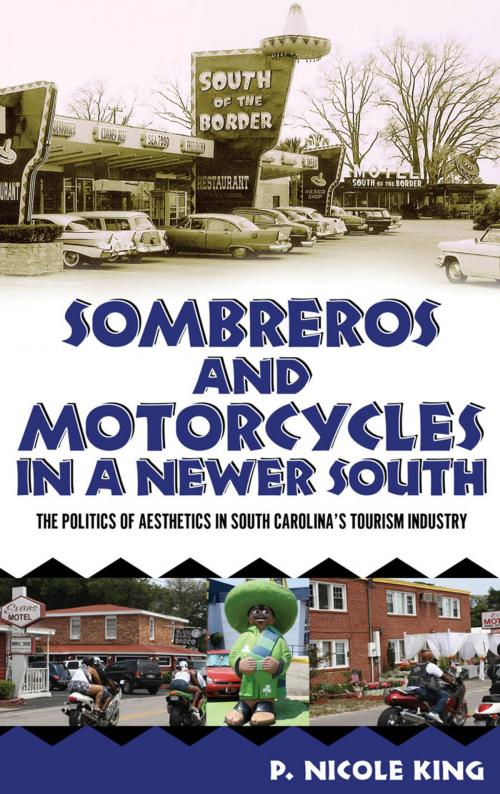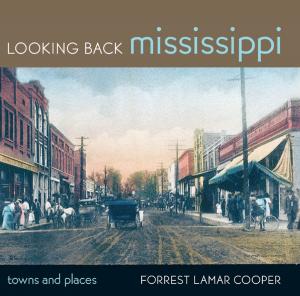Sombreros and Motorcycles in a Newer South
The Politics of Aesthetics in South Carolina's Tourism Industry
Nonfiction, Travel, United States, South, Social & Cultural Studies, Social Science, Cultural Studies, Popular Culture, Anthropology| Author: | P. Nicole King | ISBN: | 9781617032523 |
| Publisher: | University Press of Mississippi | Publication: | February 15, 2012 |
| Imprint: | University Press of Mississippi | Language: | English |
| Author: | P. Nicole King |
| ISBN: | 9781617032523 |
| Publisher: | University Press of Mississippi |
| Publication: | February 15, 2012 |
| Imprint: | University Press of Mississippi |
| Language: | English |
In 1949, Alan Schafer opened South of the Border, a beer stand located on bucolic farmland in Dillon County, South Carolina, near the border separating North and South Carolina. Even at its beginning, the stand catered to those interested in Mexican-themed kitsch--sombreros, toy pi-atas, vividly colored panchos, salsas. Within five years, the beer stand had grown into a restaurant, then a series of restaurants, and then a theme park, complete with gas stations, motels, a miniature golf course, and an adult-video shop. Flashy billboards--featuring South of the Border's stereotypical bandit Pedro--advertised the locale from 175 miles away.
An hour south of Schafer's site lies the Grand Strand region--sixty miles of South Carolina beaches and various forms of recreation. Within this region, Atlantic Beach exists. From the 1940s onward, Atlantic Beach has been a primary tourist destination for middle-class African Americans, as it was one of the few recreational beaches open to them in the region. Since the 1990s, the beach has been home to the Atlantic Beach Bikefest, a motorcycle festival event that draws upward of 10,000 African Americans and other tourists annually.
Sombreros and Motorcycles in a Newer South studies both locales, separately and together, to illustrate how they serve as lens for viewing the historical, social, and aesthetic aspects embedded in a place's culture over time. In doing so, author Nicole King engages with concepts of the "Newer South," the contemporary era of southern culture which integrates Old South and New South history and ideas about issues such as race, taste, and regional authenticity. Tracing South Carolina's tourism industry through these locales, King analyzes the collision of southern identity and place with national, corporatized culture from the 1940s onward. Sombreros and Motorcycles in a Newer South locates campy but historic tourist sites that serve as important texts for better understanding how culture moves and more inclusive notions of what it means to be southern today.
In 1949, Alan Schafer opened South of the Border, a beer stand located on bucolic farmland in Dillon County, South Carolina, near the border separating North and South Carolina. Even at its beginning, the stand catered to those interested in Mexican-themed kitsch--sombreros, toy pi-atas, vividly colored panchos, salsas. Within five years, the beer stand had grown into a restaurant, then a series of restaurants, and then a theme park, complete with gas stations, motels, a miniature golf course, and an adult-video shop. Flashy billboards--featuring South of the Border's stereotypical bandit Pedro--advertised the locale from 175 miles away.
An hour south of Schafer's site lies the Grand Strand region--sixty miles of South Carolina beaches and various forms of recreation. Within this region, Atlantic Beach exists. From the 1940s onward, Atlantic Beach has been a primary tourist destination for middle-class African Americans, as it was one of the few recreational beaches open to them in the region. Since the 1990s, the beach has been home to the Atlantic Beach Bikefest, a motorcycle festival event that draws upward of 10,000 African Americans and other tourists annually.
Sombreros and Motorcycles in a Newer South studies both locales, separately and together, to illustrate how they serve as lens for viewing the historical, social, and aesthetic aspects embedded in a place's culture over time. In doing so, author Nicole King engages with concepts of the "Newer South," the contemporary era of southern culture which integrates Old South and New South history and ideas about issues such as race, taste, and regional authenticity. Tracing South Carolina's tourism industry through these locales, King analyzes the collision of southern identity and place with national, corporatized culture from the 1940s onward. Sombreros and Motorcycles in a Newer South locates campy but historic tourist sites that serve as important texts for better understanding how culture moves and more inclusive notions of what it means to be southern today.















